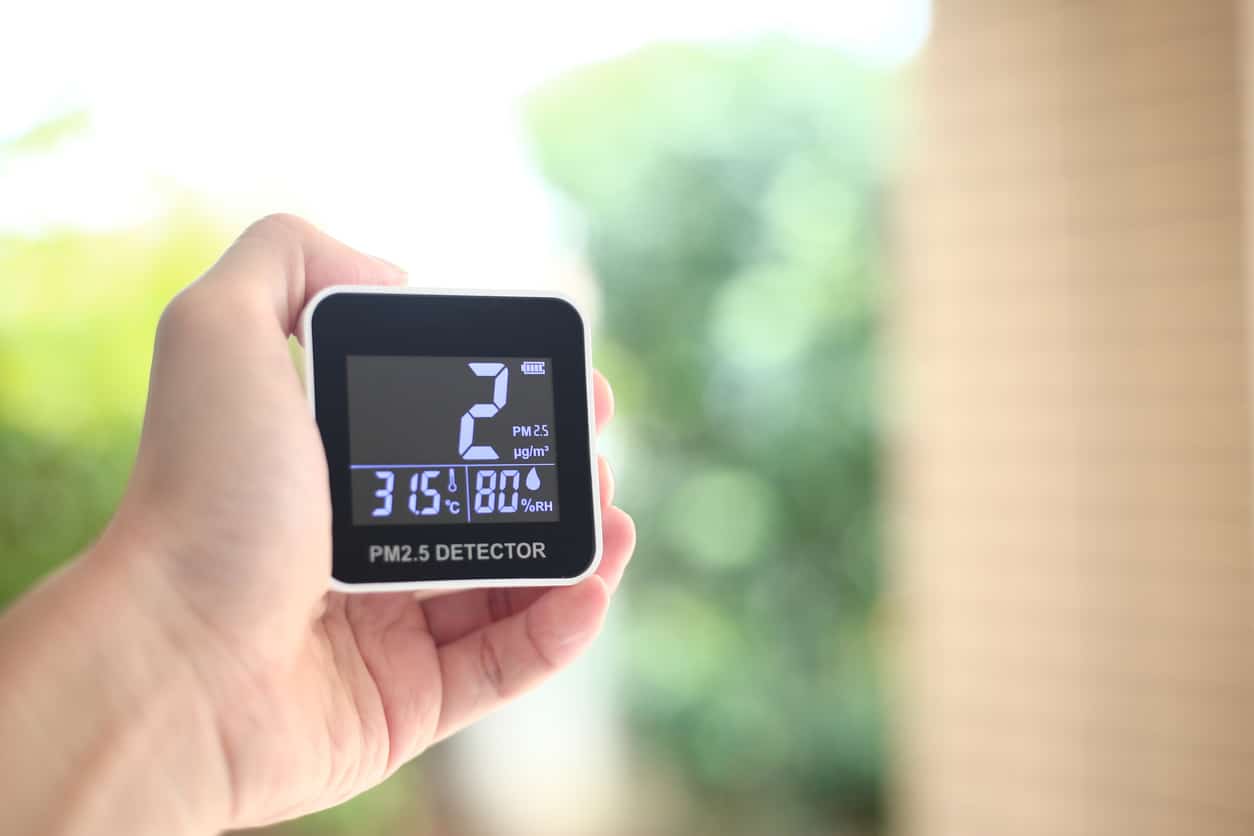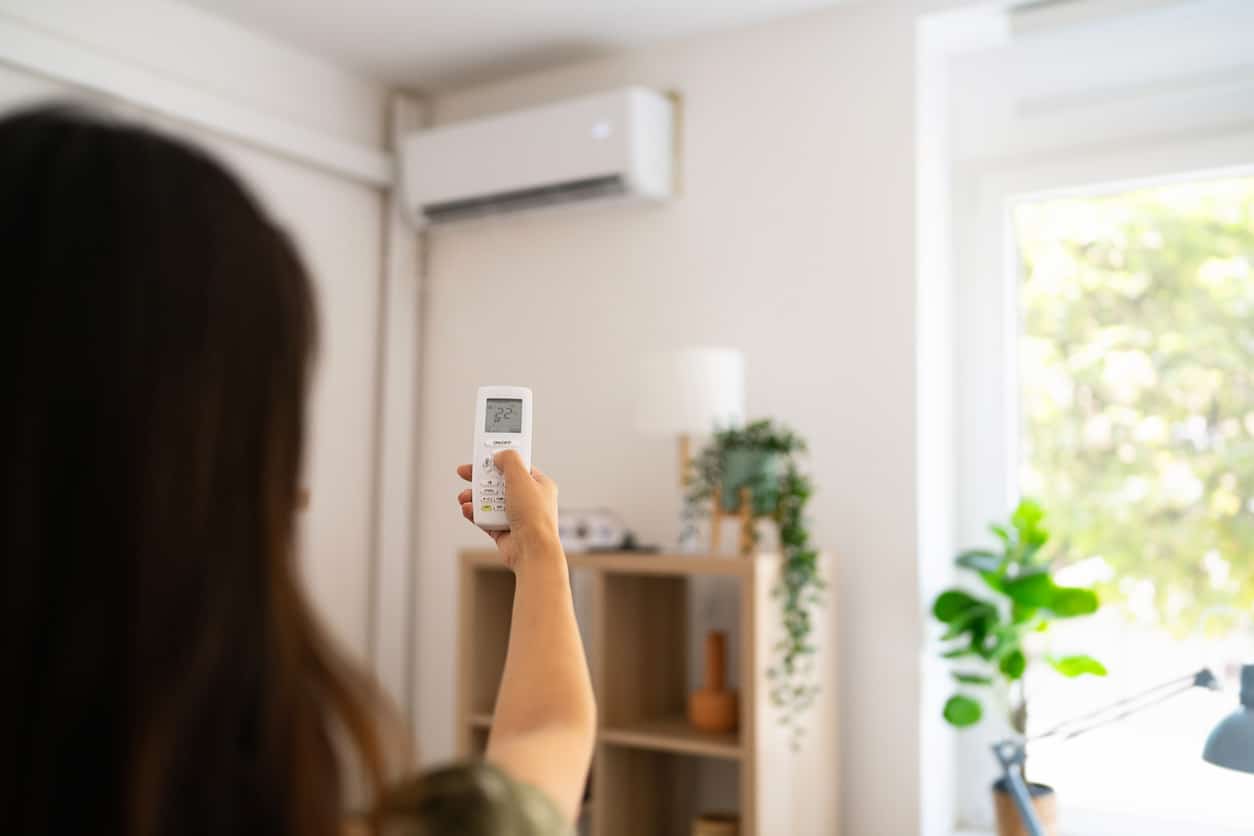Indoor air quality has become an increasing health and productivity concern as we spend more time inside buildings with reduced ventilation. Indoor air quality systems are designed to filter, clean, and circulate indoor air to remove pollutants and control humidity. Improving your indoor air can create a healthier, more comfortable, and productive indoor environment.
Table of Contents
- What is Indoor Air Quality?
- Understanding Home Air Quality
- Benefits of Indoor Air Quality Systems
- Types of Indoor Air Quality Systems
- Choosing the Right IAQ System
- Choose Indoor Air Quality Systems for Better Air Quality
- Frequently Asked Questions About Indoor Air Quality Systems
What is Indoor Air Quality?

The EPA defines indoor air quality as the quality of the air within and around buildings and other structures, focusing on how indoor air quality relates to the health and comfort of people inside those buildings.[1]
According to the EPA, bad indoor air quality can generate chronic health issues and concerns. Hence, IAQ (indoor air quality) is an essential factor for your home. Since the average person spends about 90% of their time indoors, it’s not something you can afford to ignore.[2] Homeowners who monitor air quality often find surprising problems in their homes.
What is Indoor Air Quality?
How does indoor air quality decrease? What are the impacts of poor indoor air quality? Answering these questions is the first step in taking control of your home’s air quality.
Sources of Indoor Air Pollutants
Indoor air is largely more polluted than outdoor air. This is due to the tight envelope of modern buildings. When pollutants get inside your home, they become trapped there. But where do those pollutants come from? Common sources of indoor air quality problems include:
- Dust and dust mites
- Pollen and other allergens
- Chemicals from cleaning products
- Radon gas from the ground
- Shed skin and hair from people and pets
- Viruses and bacteria
Most of these are things you have little control over, so instead of stopping them from entering your home, it’s best to devise a plan for dealing with them.
Potential Health Effects of Poor IAQ
When indoor air quality is poor, you may notice problems immediately. Allergies, respiratory distress, and headaches are all immediate effects of poor indoor air quality.
If you continue to expose yourself to these contaminants, the issues may become chronic. Chronic respiratory disease can be a concern, and some indoor air quality issues, like radon gas, can increase your risk of developing cancer.[3]
Benefits of Indoor Air Quality Systems

No one can get away from the risks of poor indoor air quality. Every member of your home unknowingly tracks viruses, bacteria, and dead skin into your home.
The best way to deal with this is through indoor air quality systems targeted to your specific contaminants. Start with a home air quality test to determine the type of issue you have, and then choose indoor air quality systems that will address those issues. Then, consider adding a home air quality monitor to keep tabs on your air quality in the future.
IAQ Systems and Their Role in Improving Home Air Quality
As you look for indoor air quality systems, understand that they address indoor air contaminants and concerns differently. Some standard methods include:
- Humidity control
- Particle removal
- Odor control
- Germ reduction
- Air cleaning
Benefits of Improved IAQ
When you reduce the problems in your indoor air, you experience cleaner air and reduced risk of respiratory concerns. This leads to increased comfort for your entire family.
Sometimes, you even save money. Fewer trips to the doctor, for instance, can reduce your budgeted expenses. Some people also find that they spend less on home repairs when humidity and dust levels are under control.
Types of Indoor Air Quality Systems
There are multiple types of indoor air quality systems you can choose for your home. These include:
Air Purifiers
Air purifiers are typically filter-based systems. These remove tiny particles from the air so that they stop circulating through your home. There are multiple types of air purifiers and filtration systems you can choose from. Some popular air filter options include:
- HEPA filters: To carry the HEPA label, a filter must remove at least 99.97% of particles that are 0.3 microns or larger.[4] This is quite small, so it covers almost all types of indoor air particles.
- Activated carbon filters: Carbon filters trap odors, volatile organic compounds, smoke, and gasses.
- Electrostatic filters: These filters use static magnetism to trap airborne particles and hold them in the filter until you clean or change it.
Air cleaners are the first line of defense against indoor air quality problems. They work well at what they do but do not trap mold spores and viruses because they are smaller than 0.3 microns.
Ventilation Systems
One of the reasons indoor air quality is such a problem in modern homes is that building envelopes are tight to prevent heated and cooled air from escaping. However, this traps indoor air contaminants inside the home as well.
Ventilation systems, including whole-house ventilation and exhaust fans in rooms that need them, can provide a breath of fresh air. You can use both to circulate the air well. Consider exhaust fans in rooms with a high risk of indoor air quality problems, like the kitchen or bathroom.
Humidifiers & Dehumidifiers
Humidity levels have a direct impact on the indoor air quality of your home. High humidity levels can damage the wood and create a place where mold can quickly grow. In contrast, low humidity levels create respiratory discomfort and cause dry skin and dry wood in your home. Humidifiers and dehumidifiers, especially if connected to the entire HVAC system, can keep humidity at optimal levels.
UV Air Sanitizers
UV air sanitizers are a special type of air cleaning system that uses UV light to kill microorganisms, like bacteria and viruses. These systems are vital to disinfecting the home. The drawback to this type of indoor air quality system is it does not remove particles like dust and pet dander.
For many homeowners, the best way to address indoor air quality is with a combination of these systems. Talk to an experienced installer to find the best options for your home.
Choosing the Right IAQ System
With so many options, choosing the right system can feel overwhelming. An experienced professional can assist you in finding a system that works for your specific needs and budget so your family can breathe freely.

Factors to Consider When Choosing an IAQ System
As you assess your needs, here are some factors to consider:
- Home size: The size of your home will impact which system you need. Make sure the system is large enough to treat your entire home.
- Specific needs: Does your home have a particular type of indoor air pollutant found during testing? If so, make sure that you choose an IAQ system that addresses it.
- Budget: Budget is a consideration. There is a wide range of costs associated with indoor air quality systems.
- Health problems: If your family has a particular health concern to address, make sure you choose an IAQ system that will help.
After choosing the best system for you, ensure you have it professionally installed. This will ensure it’s doing its job well and achieving optimal efficiency. In addition, keeping your system well-maintained will give you the longest possible lifespan.
Indoor Air Quality Is Vital to Your Health
Proper indoor air quality is essential to keeping your home safe and the people inside it healthy. Once you know about your indoor air quality concerns through testing, address them through indoor air quality systems.
A professional electrician or IAQ expert can help you find and install the right system to keep your home’s indoor air as safe as possible. With help, you can have a healthier, more comfortable living environment with clean, breathable air.
Indoor Air Quality System FAQs
Indoor air quality systems remove particles and contaminants from the air inside a building, leaving the building’s air cleaner and easier to breathe.
The best way to choose an air cleaner is to perform indoor air quality testing to determine your air’s problems, then choose an air cleaner accordingly. If possible and applicable, an air cleaner that treats the entire home is usually the best choice.
Small units designed to treat the air inside one room can usually be installed as a DIY project because these simply plug in and go. Whole-house indoor air quality systems require professional installation to connect properly to the home’s HVAC system.
With so many types of indoor air quality systems available, the cost varies significantly. A whole-house system can vary depending on the size of the home.
If your indoor air quality system has a filter, you must replace it or clean it at least every six to twelve months. Other components of the air quality system need to be cleaned at least once a year or according to the manufacturer’s directions.
Professional indoor air quality testing is the best way to determine your indoor air quality levels at the start. Once you have a baseline, use a home indoor air quality monitor to keep tabs on the contaminants your home is prone to.



